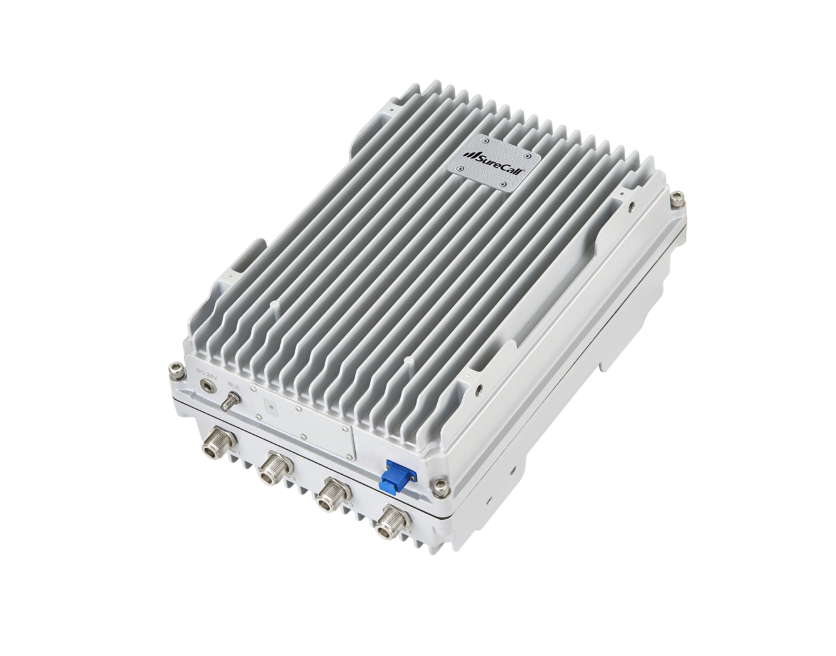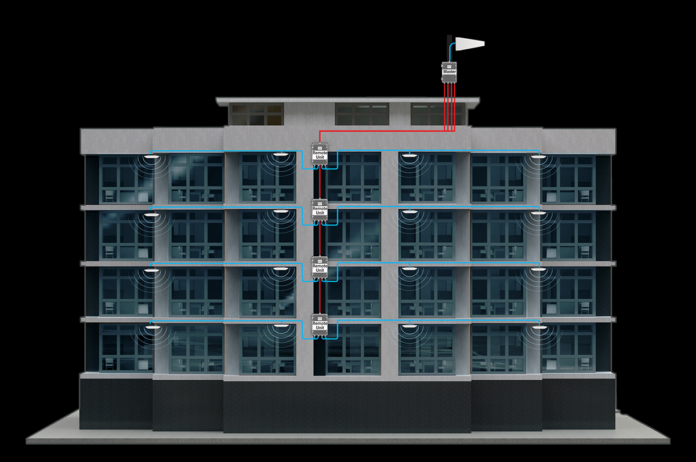SignalMax hybrid fiber DAS is the first of its kind and aims to lower DAS costs for enterprises and campuses
SureCall has introduced a new solution that combines a signal booster with a fiber backbone, which it is targeting squarely at businesses of all sizes which don’t want to deal with the cost or complexity of a traditional distributed antenna system.
The company said that its new SignalMax Fiber DAS is the first of its kind: A hybrid fiber DAS offering that has Federal Communications Commission certification under the Part 20 regulation, meaning that the solution is pre-approved for use as part of the Verizon, AT&T and T-Mobile US networks without the need for retransmission agreements.
The LTE/5G booster supports a spectrum range between 698-2.2 GHz, according to SureCall, and the company added that it is “designed for rapid deployment at a much lower cost when compared to traditional DAS.”
“We’re making a DAS for everybody—every business, big or small,” said Hongtao Zhan, CEO and founder of SureCall, in an interview with RCR Wireless News. “Traditional DAS is too expensive, too complicated. We’re making this way more affordable and easy to install.”
He said that he believes while it may take time, the ability to use a far less expensive signal booster-based solution to strengthen and extend indoor coverage will be “revolutionary” for small, medium and even large businesses and campuses. “It redefines the standards for in-building cellular coverage, offering unparalleled scalability, efficiency, and performance for today’s demanding wireless environments,” said Zhan.

The Part 20 certification is particularly important for making sure that the coverage extension enabled by the SignalMax system doesn’t require location-by-location carrier approval, but also will not cause issues with carrier networks, Zan explained. It also makes deployment much faster than working through the complex and expensive carrier processes related to getting an active signal source for a DAS deployment, he added.
The system can also be expanded to include up to four remote units within 10 miles, and each remote unit can support between 4-16 internal coverage antennas. According to Zhan, the system can use the embedded fiber that many buildings already have. Because it uses fiber to carry signals, it can maintain signal integrity over long distances, which the company said enables it to support large-scale and multi-building applications in a way that people may not typically associate with signal boosters.
Zhan likens the difference between traditional DAS and the new SignalMax offering, to the difference mainframe computers—bulky, expensive, powerful but rare—and less powerful but more flexible, easily used and widely available PCs.
Dennis McColl, a veteran telecom expert who spent decades with Verizon and is now the founder of consulting firm PracticalRF, said that usually, when a building owner wants to get in-building cellular service, they have to have a distributed antenna system as well as a carrier-based signal source to feed that DAS—which can take months and cost multiple tens of thousands of dollars, as carriers increasingly seek to commoditize such network extensions. In addition, there are substantial technical challenges related to the radio frequency (RF) engineering involved in DAS. McColl categorized traditional DAS as space-inefficient and RF inefficient, adding that within a DAS, “converting from RF to fiber back to RF … is the most complex RF engineering task that you can ask, and that’s why most of the venues that are out there are not fully optimized.”
Of SignalMax, he said: “This? This is awesome. Not only do you get the benefit of taking the signal from outdoors with a high-gain antenna and a good signal-to-noise ratio, but their Extended Range Technology … they amplify it immediately so you don’t get the signal-to-noise ratio loss.” But adding the fiber connectivity “is truly the unique part here,” he went on, because it has previously only been available with DASes. “Now, we have something that somebody could deploy quickly and easily, without the overhead, and they skip the complexity and the problems with the processes, and they just go.”
McColl added: “This really is a gamechanger. Everybody else is going to have to follow.”

